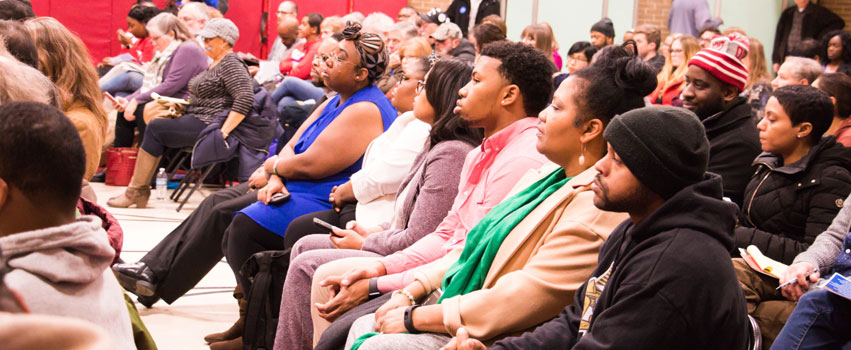Dr. Patrick Elwood
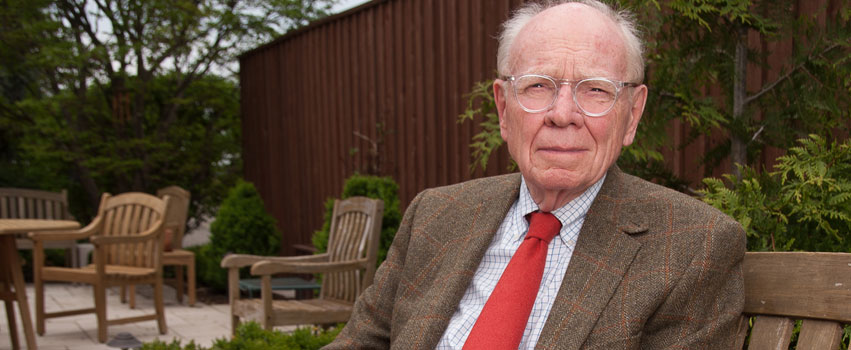
Photography by David Vernon
There’s no small amount of irony in describing a man who performs the most complicated of brain surgeries in just three words, but Dr. Patrick Elwood is humble, driven and whip-smart—traits that have defined his decades-long medical career. As founding professor and head of the Neurosurgery Department at the University of Illinois College of Medicine Peoria (UICOMP), and as founding director of the OSF HealthCare Illinois Neurological Institute (INI), Dr. Elwood has blazed many trails for his colleagues to follow.
Born and raised in Peoria, Dr. Elwood attended Bradley University and the University of Illinois College of Medicine at Chicago. After completing a rotating internship at Minneapolis General Hospital, his general surgery residency at the University of Illinois Research and Educational Hospitals was followed by a residency in neurology and neurological surgery.
Since returning to his hometown as a practicing neurosurgeon in 1961, Dr. Elwood has been pivotal in defining Peoria as a treatment center for neurological disease and disorders. In addition to his vital work helping to establish UICOMP and the INI, he formed downstate Illinois’ first LINAC radiosurgery program, founded a comprehensive stroke service and network, and created strong residency training programs in neurology and neurological surgery.
Dr. Elwood’s recently published memoir—A Life in Neurosurgery: From Air Studies to Genomic Medicine—is a smart blend of patient stories, field lessons and personal anecdotes that appeals to his fellow surgeons and the general public alike. He describes it as “a ‘memoir to the future’… as much about what is to come as what has been.”
Can you tell us about growing up in Peoria in the 1930s and ’40s?
I grew up in the country, west of Peoria. It was not a big place—just a couple of acres. When I look back, life was really simple compared to now. We had a telephone that was a “party line” [a local telephone circuit shared by multiple subscribers] and one automobile. We grew everything we ate, and my mother canned it all. I walked to the neighborhood school, about three-quarters of a mile down the road, which had a total of about 60 students in eight grades. It seemed like a fairly simple, idyllic life in a lot of ways.
My father was an unusual man. He was managing the tractor division at Caterpillar, and yet he was interested in growing vegetables and living pretty simply… even though he was from a city environment. He was from Iowa, and he moved here to work for Caterpillar.
You write in your book that your father always wanted you to be an engineer. Did he ever get over that?
He was philosophical about me going into medicine; [he] thought it was a stupid thing to do. He was not very impressed by medicine—thought it was imprecise and not nearly as challenging and interesting as engineering!
[My mother] was more accepting about physicians (laughs). She was from southern Illinois… a full-time mother for my twin sisters and myself. She was totally occupied with running the house, getting us to school and making sure we got our lessons done.
How did you decide to stay in Peoria and study at Bradley?
I was 16 [He graduated early from high school.] I had no idea about colleges on the east and west coasts, like my children did. I think in those days, kids just weren’t as sophisticated as they are now. All three of my children left town to go to university, and it just didn’t cross my mind. My parents probably felt that since I was so young, it would be good to just stay here.
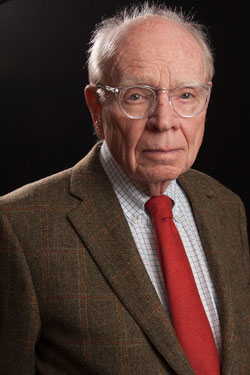 In your book, you suggest you received “less-than-optimum mentoring” in academia and you discuss the critical role of teachers in demonstrating career possibilities to their students. Why do you feel so strongly about this?
In your book, you suggest you received “less-than-optimum mentoring” in academia and you discuss the critical role of teachers in demonstrating career possibilities to their students. Why do you feel so strongly about this?
I don’t feel like I was deprived, but I was an example of the usual state, quite frankly. The one really outstanding mentor I had was Dr. John Shroyer, who was my chemistry professor [at Bradley University].
What made him so outstanding?
He really got to know each one of his students’ abilities and was concerned that they do something to utilize them. That really is unusual. The reason I mention that so much in the book is because I genuinely feel that’s probably the major thing that a teacher or professor has to offer—particularly in this digital age, when you can sit down and get the answer to anything in 20 seconds. To get insight as to what the possibilities are… you can’t get that from anybody except a mentor who cares about you.
Tell us about your rotating internship in Minneapolis.
When I finished medical school, I was convinced that I wanted to spend the next year at a city/county hospital—a charity hospital, where I would do things and be responsible. I wanted one that was well-run and clean, and where the patients got pretty good care. So I looked at various city/county hospitals… [but] I really liked Minneapolis. It was on the smaller end of the spectrum, but it was a city that did a better job at taking care of its indigent [population]… It was a very good experience for me.
And that’s where you met your late wife, Gladys, correct?
She was the charge nurse on Obstetrics, where I started the rotating internship (laughs). It was kind of funny, because the specialty I really did not like was obstetrics… but nevertheless, it was a good experience. I met my wife, and I had a different view when I was done. I certainly wouldn’t have considered it for a specialty, but I gained a respect for it.
I came back and did general surgery in Chicago with Dr. Warren Cole [at the University of Illinois Medical Center]—and that was a good experience also. I was working with three other residents at my level, and we were very busy and did a lot of exciting things. But I did not want to be a general surgeon.
You knew that the whole time?
I was undecided at the beginning, but the more I did general surgery, the more I was convinced that I wanted to do cardiac surgery or neurosurgery, and in the final analysis I liked neurosurgery better. Brain function is such an exciting thing.
Why did you decide to return to Peoria in 1961?
I had planned on going into the Army for two years after I finished the residency, because I was in the Berry Plan. [The Berry Plan allowed physicians to defer military service until they had completed medical school and residency training]. But then the Army decided they didn’t need me, so I had to make a decision in a hurry where I would go. Peoria looked like they needed a neurosurgeon, so I went home.
What prompted the establishment of UICOMP’s Department of Neurosurgery, and later, residency training programs in neurology and neurological surgery?
I’m fascinated about how most of my life happened without any plan. When I came to Peoria, I really wanted to do brain operations—a lot of brain operations. I wasn’t thinking about medical school or residencies or anything… Then they decided to start a medical school here, and I got really involved in that.
I was chairman of the curriculum committee the first five years; I spent inordinate amounts of time developing medical school curriculum. I got very interested because I thought we were doing a very bad job in schools—we weren’t making it as exciting as it ought to be. Then after that, I really got interested in graduate education and neurosurgery and neurology, which I guess, in retrospect, was a natural progression.
What kind of changes were you making to the curriculum?
We tried to develop an organ-based curriculum. Most of the medical schools at that time gave a course in biochemistry, physiology, pathology and so on. We made the fundamental decision that we wanted to have a course where you spend a given amount of time looking at all aspects of the nervous system, for example. So you look at the physiology, the biochemistry and the pathology of the nervous system, and one person is responsible for the total organization of that, rather than having them [separate.] It wasn’t a totally novel concept, but very few schools were doing it at the time.
As a trained specialist in neuroscience, I imagine a wide range of doctors have called upon you for consultation. You offer one example of being called in during a mastectomy by a frightened surgeon who had cut a nerve. Can you tell us about the network that existed behind the scenes?
First of all, the medical community was much smaller back then. We probably had a third of the doctors that we have now—and all of them were, in retrospect, overworked. But we all knew one another and people talked to one another—if they had a question, they just picked up the phone and called. It was a much simpler existence. The community then was much more of a community entity. Frankly, I think I knew the abilities and frailties of each of the physicians.
Was it less competitive then, too?
Yes, much less competitive. The hospitals were less competitive and virtually none of the doctors worked for the hospitals—they had independent practices.
Was that better or worse for patient care?
I think we do a lot of things much better, and some things much worse. For example, if you were to become ill 40 or 50 years ago, you’d call your family doctor and he’d probably see you that night or say, “Come down to the emergency room… and I’ll have a look at you.” You’d go down there and you’d see him—not an ER doctor—and he’d talk to your mother and so on. That part we’ve lost, and that’s bad. But he probably gave you pretty unsophisticated advice; he certainly didn’t have a CAT scan and so on. So there’s some loss, but tremendous gain.
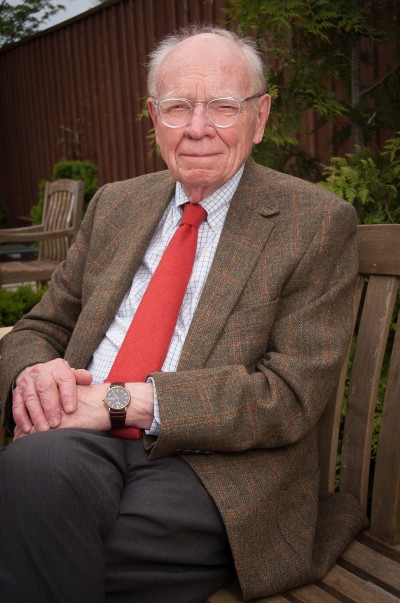 At this point in my life, I’m very uneasy about American medicine… I think it is possible to give good service, but for a whole host of reasons we don’t always do a good job. It’s easier to get good care if you’re relatively knowledgable about the system and know where to insert yourself. But if you’re just a poor, innocent soul who doesn’t know anything—and on top of it, you don’t have insurance—then forget it.
At this point in my life, I’m very uneasy about American medicine… I think it is possible to give good service, but for a whole host of reasons we don’t always do a good job. It’s easier to get good care if you’re relatively knowledgable about the system and know where to insert yourself. But if you’re just a poor, innocent soul who doesn’t know anything—and on top of it, you don’t have insurance—then forget it.
I think, unequivocally, some of the European countries are doing it better. For example, in France, if you get something serious, they really do a good job… In Paris, there’s an old hospital right across the street from the Notre Dame Cathedral. On the first floor there’s an ophthalmology emergency room for the entire city, [with] ophthalmologists in there 24 hours a day. So if you get a corneal laceration at midnight, you can be seen by an ophthalmologist immediately. All of these systems have great advantages and great flaws. I just feel that in a country as sophisticated and well-off as ours, people ought to be able to get medical care with more efficiency and less anxiety.
When you began practicing in 1961, there were very few tests available to diagnose brain or neurological problems. That is certainly not the case today. Can you walk us through the evolution of neurosurgery and its main challenges?
The main challenge in 1961 was that we couldn’t find anything in the brain or the spinal cord without doing some test that was dreadful for the patient. It either had risks, or it had pain, or both—and even then, we didn’t get really precise data or information. Now we can get very precise information and not do anything bad to the patient at all. It’s rare now for something to go undiagnosed, where it used to be commonplace. They might have had a neurological illness but we didn’t know what it was, so we’d observe it. We’d follow them for six months or a year, and as the illness evolved, we’d make a diagnosis.
In neurosurgery, there were three really big revolutions. One was the surgical microscope—so we could actually see what we were doing. At this point it seems kind of obvious, but it wasn’t then. The second was CT and MR imaging—so we could see exactly what was wrong and where it was, very precisely, without doing anything bad to the patient. The third thing was coupling all of that digital information with guidance systems so we could just drive right to [the problem] and never get lost. That really is remarkable.
I mean, in 1959, I would know there was a brain tumor in the right parietal region, and I would turn this big skull flap to open the covering of the brain and look at it, and the brain would look normal. Then I would have to decide where to open it [again] to find the tumor. Sometimes I opened it in the wrong place. Everybody did. Now it’s like using Google to find a house. The guidance system says, “Cut here.” That’s pretty good.
Tell us about your time as director of the OSF HealthCare Illinois Neurological Institute.
We started in 2000-2001, and the goal was to develop fairly sophisticated care in every one of the neurological subspecialties—so we’d have an epilepsy unit, a multiple sclerosis unit, and so on. I think over the years we gradually did that. My wife, Deb Richardson, was the chief operating officer; her job was to put the units together. And I think we made real progress.
OSF now has 13 hospitals… and my desire was to develop a system where, regardless of where someone in that system got something… they would get the right care and the optimum care. We haven’t quite gotten there yet.
And that kind of speaks to how they do it in France. For a long time I did a lot of Gamma Knife–it’s a radiation treatment for deeper things in the brain. I’d go to Marseilles, because the French made the decision that virtually everyone who needs Gamma Knife would have it done in Marseilles. So they have the busiest service in the whole world—they do 10 patients every day. The downside is that patients have to travel. The upside is that they do almost perfect work—they have it so systemized. That’s the challenge: to figure out where something ought to be done, and then get everyone to agree that… [for example] we’re going to develop an epilepsy center at X, and any patient will be sent there, and we’ll arrange so they can get there. That’s a big task to be achieved yet.
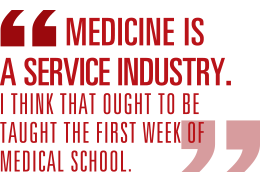 Do you think something like that could succeed in Peoria?
Do you think something like that could succeed in Peoria?
I just feel that it’s the biggest opportunity imaginable, and I think it’s adamantly doable. It’s like most things—you just have to have people who really want to do it so badly that they fuss over it day and night. It isn’t something that just happens unless there’s somebody annoying you all the time about it! (Laughs)
You retired as head of the Department of Neurosurgery in 2004 and were awarded professor emeritus status. Was retirement difficult?
No, it really wasn’t at that time because I’d already [moved on] to this job as CEO of the INI, so I was working flat out. What has been really difficult is retiring from that job…. It’s hard to disconnect from that. Basically now all I do is develop research programs. We have a research group, and I go to the residents’ conference from 7:00 to 8:00 every morning, but I’m really not involved with solving those systems problems, and it’s a little difficult.
But, we’re going to go to Alaska this Friday [in May of 2019]. We’re going to do a cruise for seven days, and then the Society of Neurological Surgeons meets for a conference in Seattle… I’m looking forward to it.
I’m glad you’re enjoying “semi-retirement”! Do you have any grandkids?
I have three children and seven grandchildren…. I have to travel more, because my youngest son is in Washington, DC, and my daughter is in Pasadena, California. I have one son in Peoria—he’s a plastic surgeon.
Of everything you leave behind, what do you want to be most
remembered for?
Well, I know what I would’ve liked to achieve—and that was this system of care. I don’t know whether I’ll be remembered for that or not. I don’t know if it will get done.
Let’s talk about the ups and downs of a neurosurgeon’s career. In your book, you say performing an epidural hematoma in a child can be the most gratifying experience in the career of a neurosurgeon if you succeed, or the most devastating failure if you don’t. Can you talk about that, and how you got through the tough experiences with patients you couldn’t save?
Over the years, there’s no question that the positives hugely outweigh the negatives. Lord, there were some really bad negatives. I remember when Dr. Julian Lin came [to OSF] to do pediatric neurosurgery. I found it difficult to give up because I liked pediatric neurosurgery, but it was wonderful not to have to [deal with] the malignant brain tumors in children, because those were just devastating. To [find] a medulloblastoma [cancerous tumor] and have to go tell the parents… that was just awful. But nevertheless, every week there was an exciting opportunity, so that keeps you happy and going.
Any advice for readers?
I don’t have advice for readers, but I do have advice for medical students. Work hard. Work really hard. And actually, there is a motto too, in a sense: medicine is a service industry. I think that ought to be taught the first week of medical school. Just walk in and say, “Medicine is a service industry, and if you don’t understand that, now is the time to get out.” (Smiles).
Congratulations on your book! That is a great accomplishment.
Actually doing the book was a real education. Just learning about writing, and about literary agents in the U.S., and about getting things published and getting reviewed… It’s a whole different world.
How long did it take to write?
About a year… but the rewrite took another year. It is interesting, though; you don’t learn anything until you try something. Many years ago, I started painting in oil. I never became a very good painter, but I certainly have a much better feel as to how difficult it is, what makes a painting, and how hard it is to make colors the way you want them. Before I tried, I had no idea. The same is true with the book. I have a lot more insight now as to what goes into writing! (Laughs) PM
